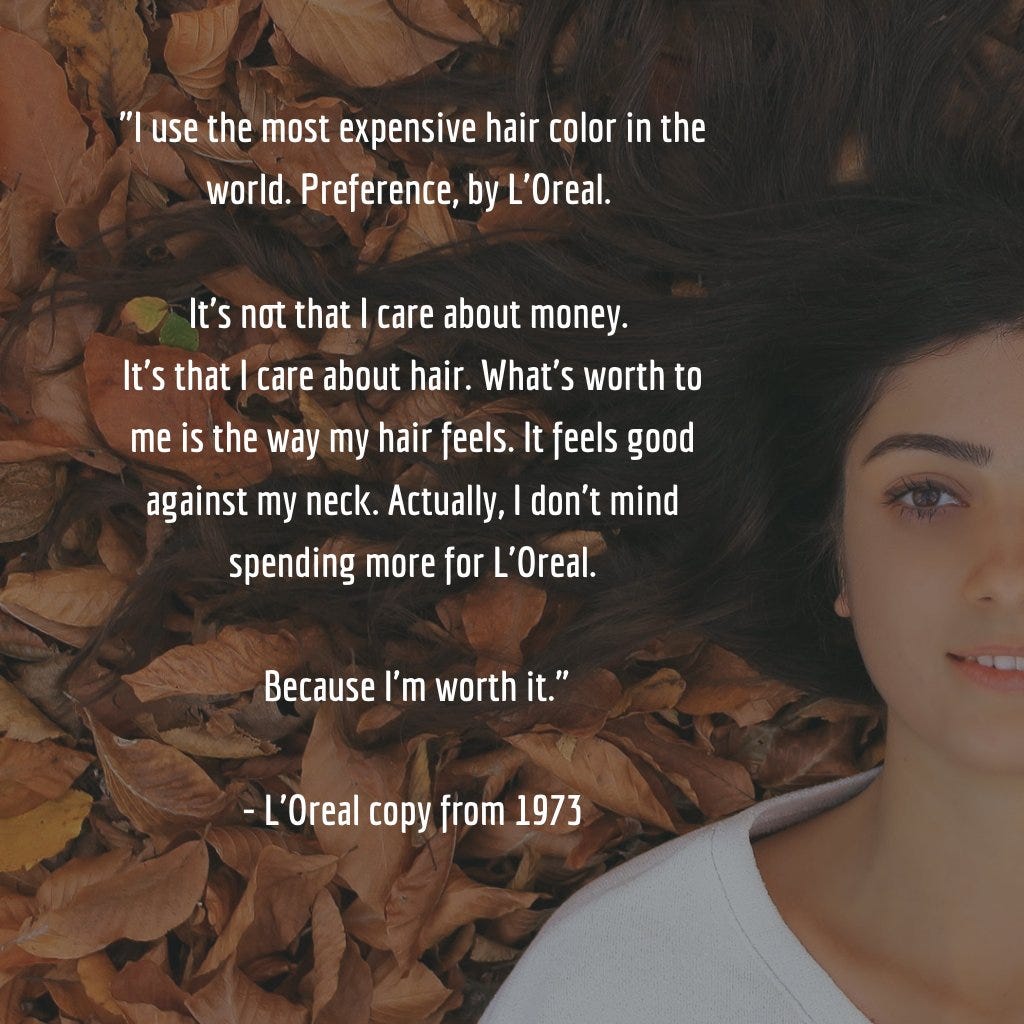The Changing Colours
Two young copywriters penned down lines that would forever change the way women viewed themselves
This is a story of two great women copywriters. One was conservative, other was a rebel. Both worked on the same category at two different points of time. And with the phrases and lines they penned, they went on to deeply impact the feminist sensibilities of generations of women.
***
Shirley Polykloff was quite sure that the lunch meeting with her orthodox, Jewish, future mother-in-law did not go well. ‘What did your mother say, George?’ she asked as they drove back. George chose his words carefully - ‘Well, she said you paint your hair.’ And then after a pause, he asked: ‘Well, do you?’
Shirley let out a wan smile. She loved to colour her hair. But now she felt humiliated to hear the voice of her future mother-in-law in her head - ‘Does she colour her hair? Or, doesn’t she?’
It was 1950’s America and women were just stepping into actively visible roles in the work place. There was this need to look good without letting go of their conservative strings. Shirley joined ‘Foote Cone & Belding’ as a junior copywriter in 1956 and was put on the Clairol account. The company was launching the first ever hair color bath that made it possible for women to lighten, tint, condition and shampoo at home in a single step.
‘This was to the world of hair colour like what computers were to adding machines’. Miss Clairol gave American women the ability, for the first time, to colour their hair instantly at home. But there was still the stigma and the prospect of the disapproving mother-in-law.
Deep inside, Shirley felt that women had the right to look the way they wanted. But she also believed that women ought to excercise that right with discretion. It made her pen down these lines:
‘Does she..or Doesn’t she. Hair colour so natural, only her hairdresser would know’
Fashionable girl next door models, with either the husband or her child around them, were the dominant visuals. The product served the need and Shirley’s lines captured the aspiration of the woman of those times: ‘I will decide my look - but I will do it secretly’
The campaign was a runaway success. From the 1950’s to 70’s, Clairol’s market share grew from 7% to more than 40%. Clairol became the undisputed leader in America.
***
Ilon Specht was under pressure. The big launch was just weeks away and the set idea that they were working on had been dropped. Now, they had to re-think and re-start. As the creative writer at McCann Erickson, Ilon was debating hard with her team on the new creative route.
In 1973, the french hair colour giant, L’Oreal was set to enter the Amercian market to take share from Clairol. L’Oreal believed that it’s product, Preference, was technically superior and they planned to showcase that in the launch communication but they dropped that idea in the last moment.
Now, Ilon was a rebellious kid who dropped out of college at 23 years to join advertising. She spoke loud and fast, was super creative and unconventional.
‘We were sitting in this big office,’ recalls Specht, ‘everyone was discussing what the ad should be. They wanted to do something with a woman sitting by a window, and the wind blowing through the curtains…The woman was a complete object. I don’t think she even spoke. They just didn’t get it…I could just see that they had this traditional view of women and my feeling was that I’m not writing an ad about looking good for men..’
In a fit of anger, she wrote this down in 5 minutes:
That last line ‘Because I’m worth it’ hit the home run for L’Oreal. Every 70’s woman who wanted to step up, got this at a deeper level. The fledgling women’s movement got wind under its wings with this one line. Consumers started shifting from Clairol to Preference and by mid 1980’s, Preference overtook Clairol’s Nice ‘n Easy to become the leading hair color brand.
‘Because I’m Worth It’ was translated into 40 languages and has united women around the world, encouraging them to fearlessly embrace their ambitions and believe in their self-worth every day.
And by 1997, L’Oreal made the line their company slogan. Because it was worth it.
***
Why are the stories of Shirley Polykloff and Ilon Specht important? Because, both were brilliant copywriters who in their own way, converted their personal life moments into phrases that defined the feminist sensibilites and self esteem for that particular generation.
They channelled their creativity to tell stories that connected consumers to hair colour with a deeper meaning and purpose. And changed the fortunes of two mega brands.
Story Notes
Malcolm Gladwell wrote this first The New Yorker on March 22, 1999. This, and a set of other brilliant stories by the prolific writer are now available in his book 'What the Dog Saw And Other Adventures’
It has been my wish to storify this for a while. There is a lot more which happened after this - and you need to read the full piece for it. Fascinating.
Other famous ‘Does she..or doesn’t she?’ classic ads on this page and the ad film with the male voiceover below:
And this is the orginal 1973 L’Oreal film:






